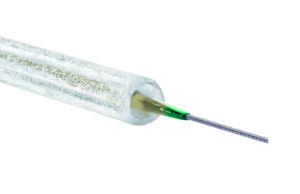
“We face a scarcity of data evaluating endovascular therapy for isolated popliteal artery lesions, known as a difficult vessel bed to treat as we don’t want to leave anything behind,” said Frank Vermassen, MD, chief of vascular and thoracic surgery at UZ Gent in Ghent, Belgium. “It is encouraging to see that we can safely and effectively treat these lesions with a DCB [drug-coated balloon]-only approach.”
Vermassen was speaking as Biotronik announced the two-year results from the BIOLUX P-III BENELUX all-comers registry, which he presented as principal investigator during the Cardiovascular and Interventional Radiological Society of Europe (CIRSE) 2023 annual meeting (Sept. 9–13), held in Copenhagen, Denmark.
The prospective, international, multicenter post-market registry evaluated the safety and efficacy of the Passeo-18 Lux DCB catheter in isolated popliteal artery lesions. This indication is considered a difficult vessel bed to treat due to its biomechanical constraints that usually preclude the placement of stents.
BIOLUX P-III BENELUX registry enrolled 99 patients in Belgium, The Netherlands, and Luxembourg with Rutherford 2–5 disease and at least 2cm of healthy vessel segment between lesions in the popliteal artery and lesions in the distal superficial femoral artery. All patients were treated with the Passeo-18 Lux DCB. The bail-out stenting rate was 14%. At 24 months:
- Freedom from clinically driven target lesion revascularization (CD-TLR) was 81.6%
- Freedom from major target limb amputation was 98%
- Freedom from all-cause of death was 89.4%
- Significant improvement of Rutherford classification was observed for 88.1% of the patients











